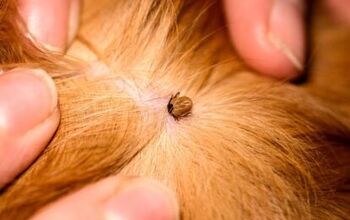Dog Braces for Teeth: What You Need to Know

Wearing braces is a normal part of childhood for many people. You may remember the struggle of finding food stuck between your teeth and the braces or the pain of using rubber bands to close gaps more quickly. The sight of a child wearing braces is so familiar that it is unlikely to cause a reaction, but what if you saw a dog wearing braces?
Dental issues are just as common in pets as they are in people, but the options for treating them are more limited. For dogs with teeth so crooked that it makes it difficult to eat or even open their mouth, dog braces are an option. Keep reading to learn more about braces for dogs.
Related: Top 15 Toys for Clean Dog Teeth
The short answer to this question is yes, dogs can get braces. In fact, they may be more common than you would imagine. Many dog breeds have strange teeth, whether it is an overbite, underbite, or simply crooked teeth that get in the way of normal chewing. Veterinarians generally recommend braces for dogs who have teeth that hit other teeth or hit the soft tissues in the mouth when they bark or chew. In cases like this, the simple solution may be to remove the problem teeth but, particularly in young dogs, it may be more beneficial in the long run to straighten the teeth instead of removing them.
Some dog breeds are known for having crooked teeth or misaligned bites. Bulldogs, for example, are commonly seen with a strong underbite and many short-faced breeds have teeth that protrude from the jaw when their mouth is closed. So, how do you know if your dog needs braces? The simple answer is that if your dog’s teeth cause him pain or prevent him from eating, something needs to be done.
In many cases, trauma to the face and jaw causes the teeth to move into new spaces. From there, the dog’s other teeth could be affected by the new position, striking against other teeth or the soft tissue in the mouth. If your dog’s bite doesn’t line up properly, the discomfort could turn to pain and it could become bad enough that your dog stops eating. At this point, you definitely need to talk to your veterinarian about the possibility of dog braces.
Your dog’s mouth is shaped very differently from your own, so it makes sense that dog braces will differ from human braces. Your dog may be fitted with typical braces or an alternative such as plates or bands in the mouth. Most dogs wear braces for 6 to 12 months before the teeth are properly positioned. While your dog is wearing the braces, it is essential that you keep his teeth clean. You’ll need to brush the teeth daily and flush your dog’s mouth with antiseptic. In some cases, your dog may need to switch to soft foods and any chew toys and bones are off-limits.
As your dog’s caregiver, it is your job to provide for his every need. For a dog with braces, things can get a little tricky so be sure to talk to your dog’s orthodontist for tips on caring for your dog’s teeth and use the information you’ve learned here as well.

Kate Barrington is the loving owner of two cats (Bagel and Munchkin) and a noisy herd of guinea pigs. Having grown up with golden retrievers, Kate has a great deal of experience with dogs but labels herself a lover of all pets. Having received a Bachelor's degree in English, Kate has combined her love for pets and her passion for writing to create her own freelance writing business, specializing in the pet niche.
More by Kate Barrington























